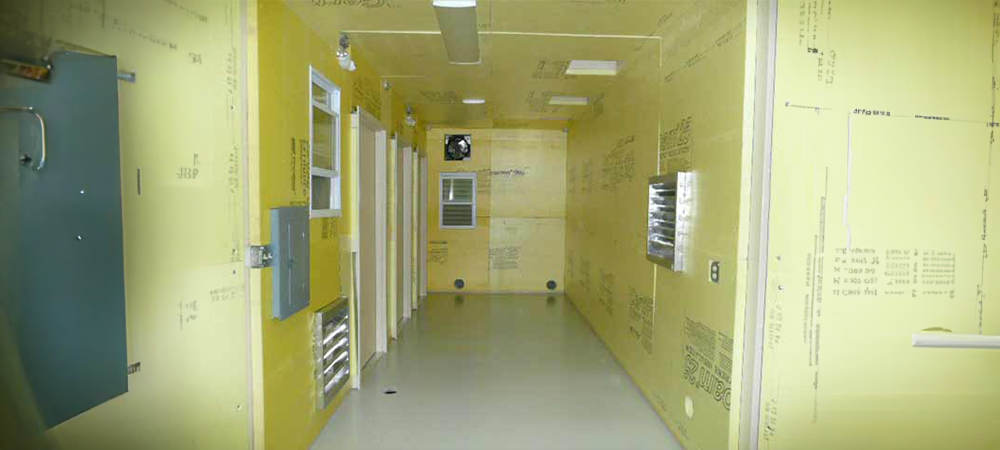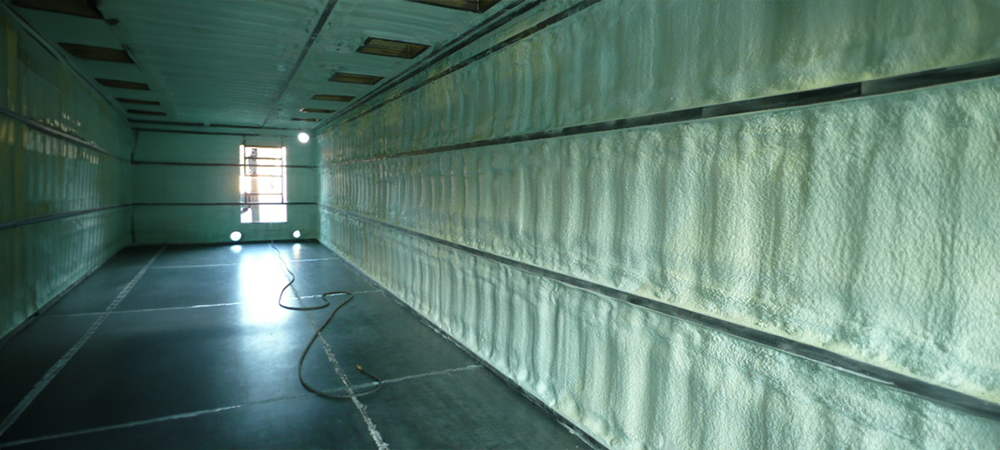Insulating a Shipping Container
Insulating a Shipping Container
Insulating a Shipping Container
It is becoming more and more popular as a form of modified storage containers to insulate the interior of a shipping container or storage container. There are several different ways to go about doing so. The more commonly used materials for containerized applications are fiberglass, rigid polystyrene foam panels and closed cell spray foam. There are also some coatings on the market that offer insulating qualities as well. However, for the purposes of this article, we are going to discuss the three options mentioned.

Fiberglass Insulation –The fiberglass insulation we use is a standard thickness of 3 ½” and will provide an insulating value of R-13. The sections are cut and fitted inside of a wood framed interior. We don’t make any penetrations to the exterior of the container when constructing the wood frame. The fewer penetrations you make to the exterior of the container the better. The 2” x 4” wood studs are mounted 16” on-center.
The walls of a storage container are corrugated. There will be gaps between the insulation and the outside corrugation. Depending on where the storage container is going, you may consider putting a moisture barrier between the container wall and the insulation.

Rigid Polystyrene Foam Panels – The foam panels are available in varying thickness as well as the size of the panels. The panels also come in varying densities (depending on just how rigid a panel you require). Your application will dictate the type of panel you utilize. The foam panels will provide an approximate insulating value of R-5 per inch. The major benefit of using foam panels over fiberglass is the interior space you can save. When installing foam panels, they can either be glued directly to the corrugated walls of the shipping container or screwed into flat bar mounted to the container walls. You don’t need to wood frame the interior of the container as with fiberglass insulation. Thus saving several inches on the sidewalls and ceiling. **We recommend the flat bar method as opposed to gluing the panels to the container walls. Because the storage container walls are corrugated, the panels do not come in constant contact with the walls. For every section of the panel that spans an outside corrugation, it is not adhered to the container wall.

Closed Cell Spray Foam – In our opinion, closed cell spray foam is the most efficient insulation. It will offer the highest insulation value (approximately R-6 per inch). The spray foam completely covers the surface of the corrugated shipping container walls. There are no gaps between the insulation and the container’s wall (as there are with fiberglass or polystyrene panels). There is much less risk of condensation or moisture developing with closed cell spray foam. There is no need to frame out the interior as the spray foam adheres directly to the sidewalls and ceiling of the storage container. It can be sprayed as thick as necessary to achieve whatever insulating value you require. The one con to this type of insulation is the cost. It can be the most cost prohibitive of the three methods. This is primarily due to what is required (labor and materials) to install a wall covering over the spray foamed walls (should it be necessary).
Any of these methods are a very effective way to insulate the interior of your shipping container or storage container. Contact us today to discuss your options and figure out which method is right for you. For more modified storage container ideas visit the storage container modification section of our website.
**We recommend that a wall covering (Hardie Paneling, plywood or plywood with an FRP overlay) is installed over the insulation to finish out the interior.
Written By: Ray Gregorio, Container Technology Inc.








